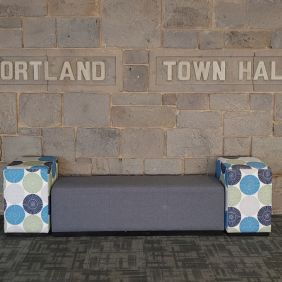The thought of moving your office to a new location can be daunting, but with proper planning and execution, it doesn’t have to be. Everyone desires to have a functional office, which is comfortable and caters to the needs of the employees. In order to make this happen, you need to consider various factors such as budget, size, location, and amenities.
Office relocation is shifting an office from one place to another. It involves planning, packing, transporting, and unpacking office equipment, furniture, and other items. The whole process can be stressful and time-consuming. However, with proper planning and execution, it can be done smoothly.
Why Move Offices?
There are various reasons for moving offices. The most common ones include:
- Outgrowing the current office space: This is the most common reason for relocating offices. As the business grows, it needs more space
 to accommodate more employees, equipment, and inventory.
to accommodate more employees, equipment, and inventory. - Change in business requirements: The business might require a different type of office space to better suit its needs. For example, a company that was previously working from a home office might now need a more professional space to meet with clients.
- Better location: The current office might be in a location that is not conducive to business. It might be too far from potential clients or suppliers. Moving to a better location can help the business grow.
What to Consider Before Moving Offices?
There are a few things that you need to consider before moving offices:
- Budget: The cost of moving an office can vary depending on the size and location of the new office. Get quotes from different movers and compare prices before deciding on one.
- Size: Make sure that the new office is the right size for your business. It should be large enough to accommodate all your employees and equipment, but not too large that it becomes expensive to maintain.
- Location: The location of the new office is important for the growth of your business. Consider factors such as accessibility, proximity to potential clients, and public transportation.
- Amenities: The new office should have the necessary amenities to support your business. This includes things like meeting rooms, storage space, and a kitchen.
With the right plan, you will be able to move in a seamless manner. Now that we have covered the basics, let us get to the actual moving.
What Does Office Relocation Entail?
While there is no single moving process that is similar to another, there are some basic things that are the same. When it comes to office relocation, the process entails four key steps:
- Packing up your current office
- Moving to the new office
- Unpacking and setting up the new office
- Disposing of the old office space
Packing Up Your Current Office
The first step is to pack up your current office. This involves sorting through all your belongings, and deciding what to keep and what to get rid of. Once you have sorted everything, start packing up your belongings in boxes. Make sure to label the boxes so that you know where everything is.
rid of. Once you have sorted everything, start packing up your belongings in boxes. Make sure to label the boxes so that you know where everything is.
Moving To The New Office
The next step is to actually move to the new office. This involves hiring a moving company, loading up all your belongings into the truck, and driving to the new office. Once you have arrived at the new office, unload everything and start setting up your new space.
Unpacking and Setting Up The New Office
The third step is to unpack everything and set up your new office. This involves putting all your furniture in its rightful place, hanging up pictures, and setting up your computer. Once you have everything set up, you can start working in your new office.
Disposing Of The Old Office Space
The final step is to dispose of the old office furniture and space. This involves cleaning out the space, returning keys to the landlord, and terminating any leases or contracts. Once you have done all this, you will be ready to move into your new office.
Moving an office can be a daunting task, but with the right planning and preparation, it can be done seamlessly. Follow the steps outlined in this guide and you will be able to move your office without any problems.
Useful Office Relocation Tips
Now that we have established that office relocation is not an easy task, you will need some help. Here are a few tips to help you with your office relocation:
- Start planning early: The earlier you start planning, the better. This will give you enough time to research different moving companies, compare prices, and find the perfect new office space.
- Make a list: Make a list of everything that needs to be done. This will help you stay organized and make sure that nothing is forgotten.
- Hire a professional: Hire a professional moving company to handle the heavy lifting. This will save you time and energy, and ensure that your belongings are moved safely.
- Have a plan: Have a plan for setting up your new office space. This will make the unpacking and setting up process much smoother.
- Take Your Office Furniture into account: Your office furniture is one of the most important things to consider when moving. Make sure that you measure all your furniture and plan accordingly.
- Label everything: Label all your boxes so that you know where everything is. This will save you time and frustration when you are unpacking.
- Do a trial run: If possible, do a trial run of the move. This will help you identify any potential problems and make sure that everything goes smoothly on moving day.
- Have a backup plan: Murphy’s Law states that anything that can go wrong will go wrong. Be prepared for anything by having a backup plan.
- Relax: The whole process can be stressful, but try to relax. Everything will work out in the end.
Wrapping Up
Office relocation can be overwhelming when you do not have an idea of how to go about it. With this guide, you should be able to move and settle into your new office space without any hiccups. Always consider working with professionals for the best results.









